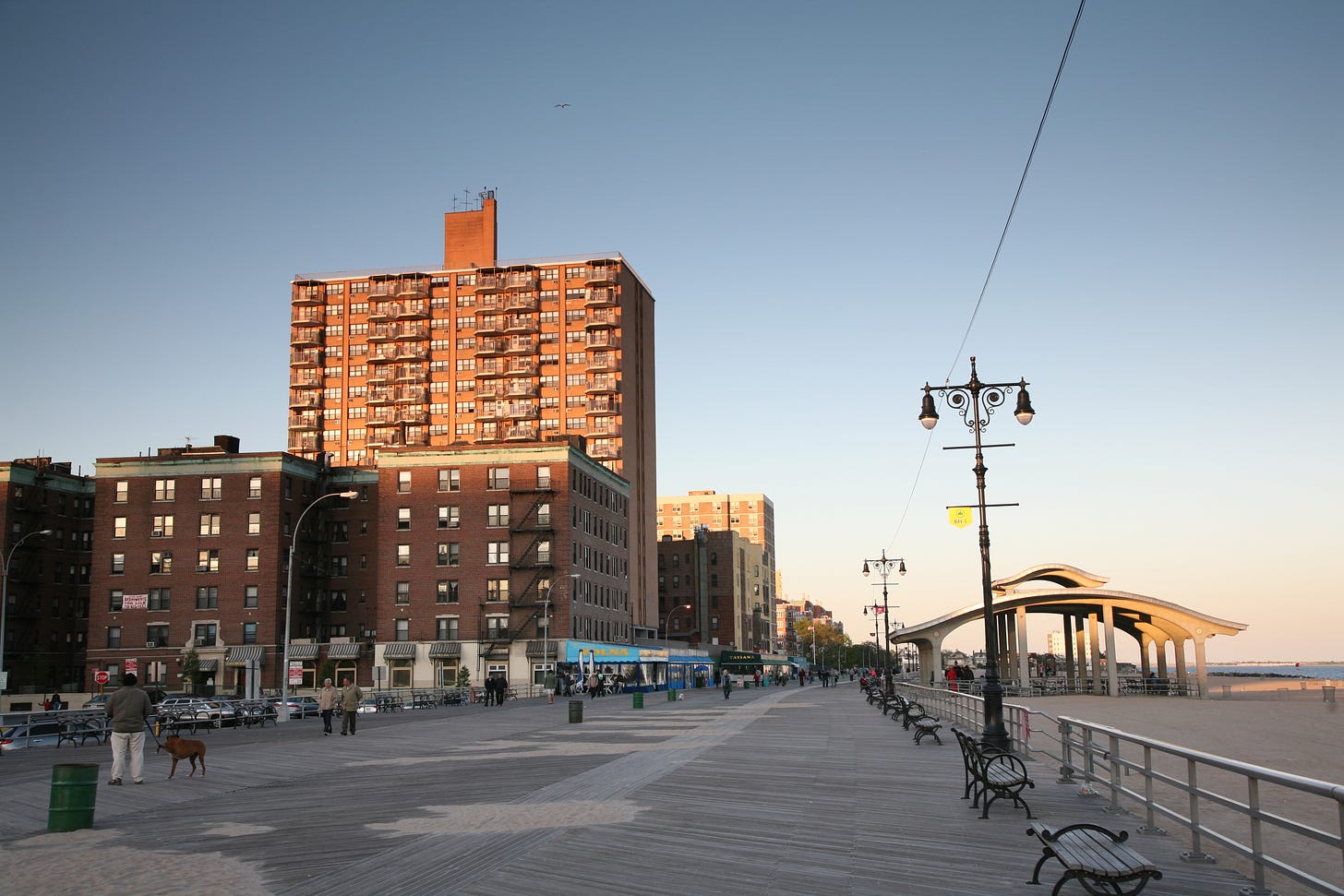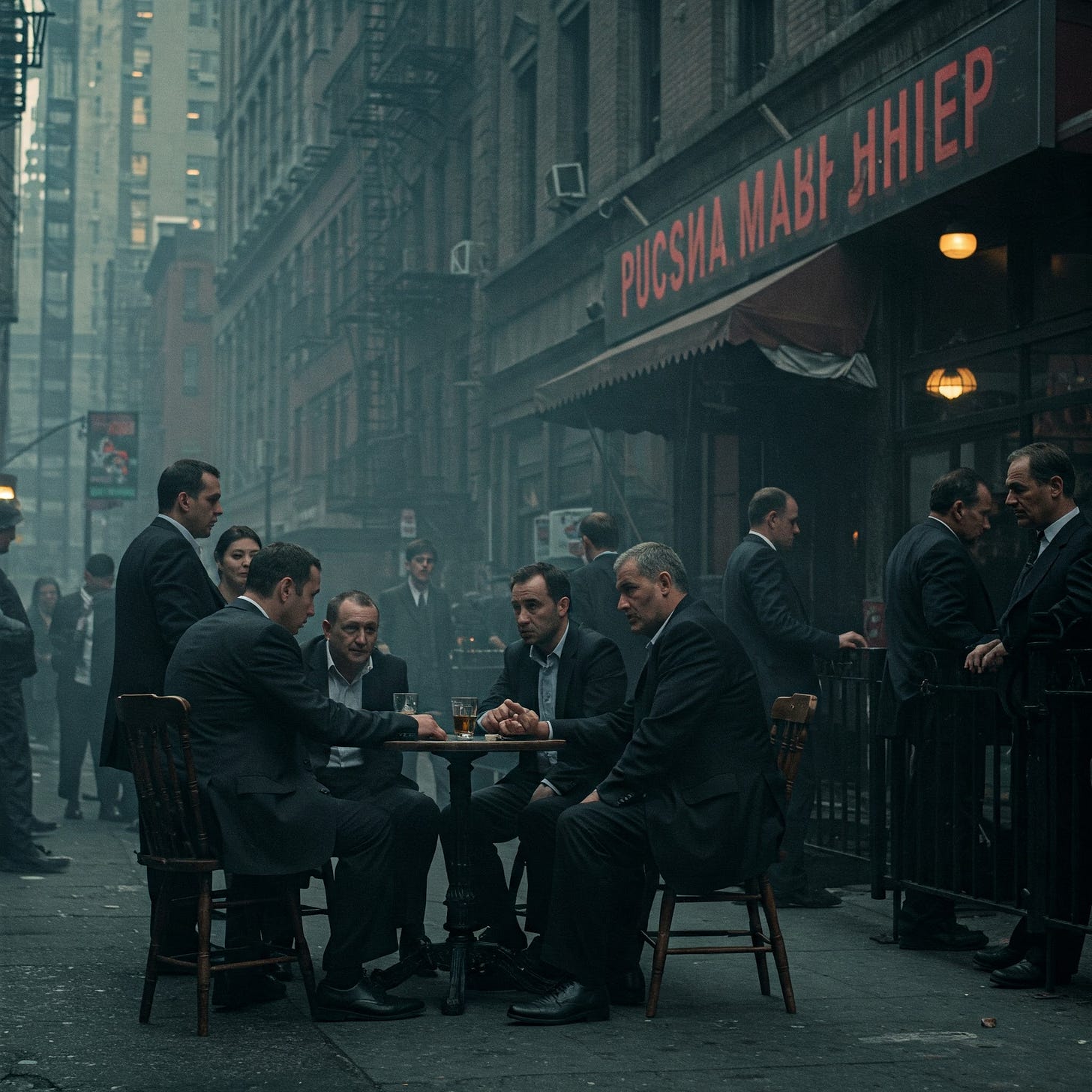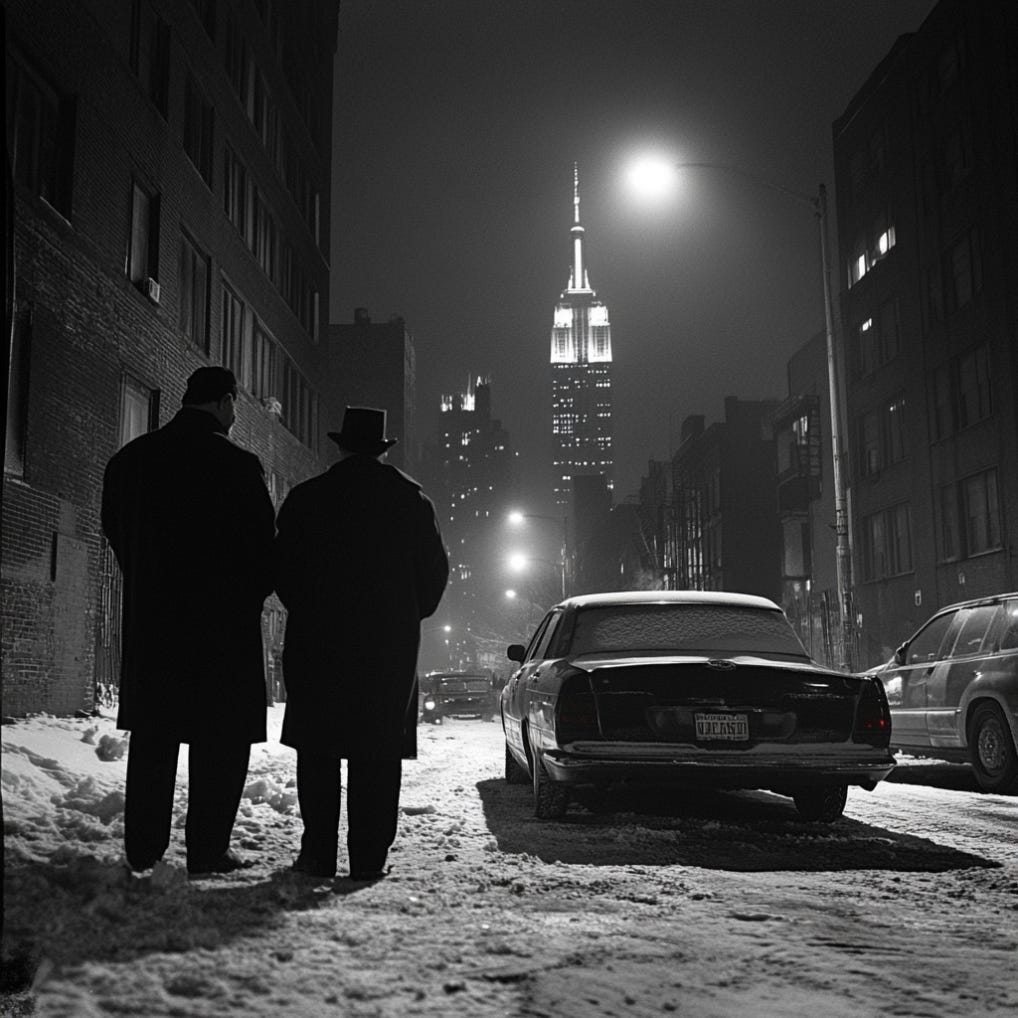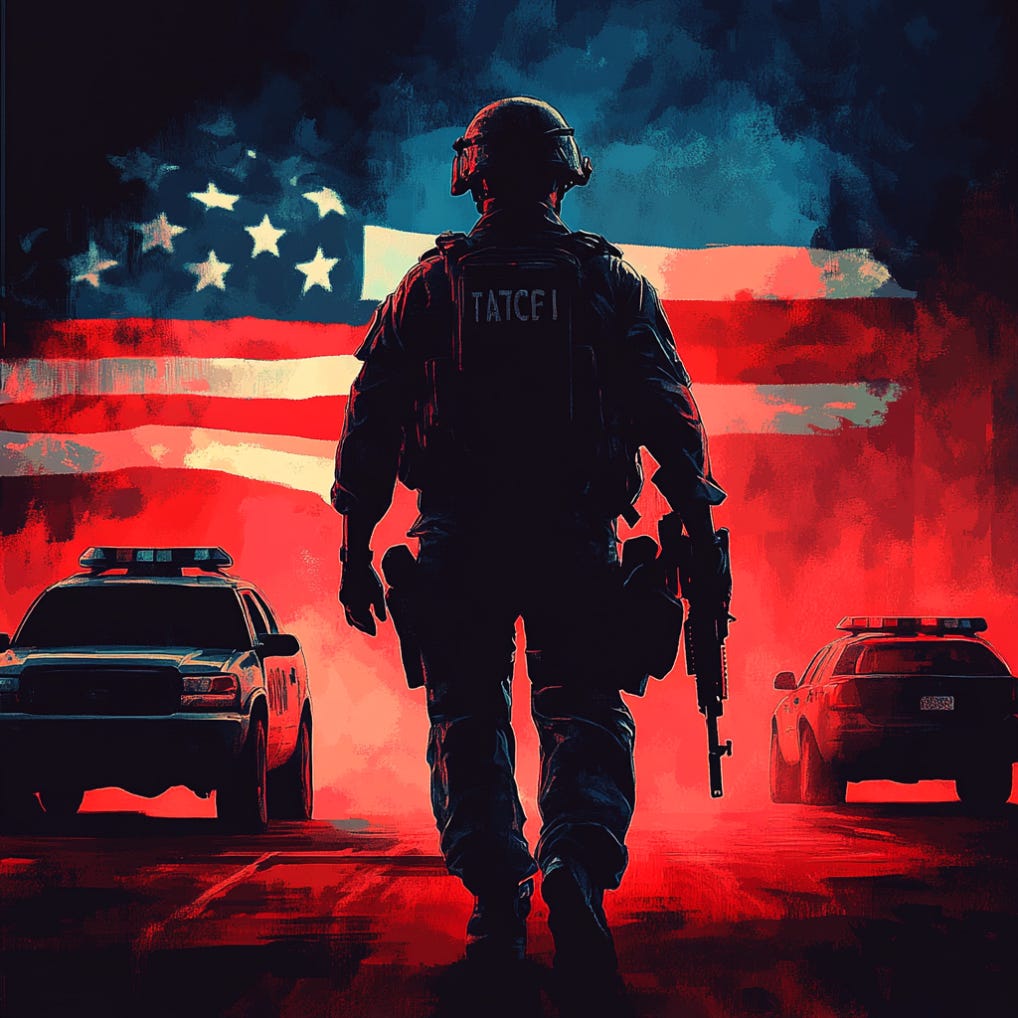Russian Mafia in the United States (U.S.): Mob Evolution from 1970s to 2025
Is the Russian Mafia/Mob still active in the United States?
Lately have been thinking a lot about Russia/Ukraine. Both countries are corrupt as hell, and the Russian mafia/mob has been operating in major cities within the U.S. since the 1970s and 1980s.
In the mid-2010s, I spoke with someone living in an upscale neighborhood in NYC, and he claimed the Russian mob is 100% still in operation.
According to him, the Russian mob maintains a tight grip over large-scale construction projects and renovations in affluent areas such as Tribeca and SoHo.
It's essentially a closed-loop extortion scheme where Russian mob-affiliated groups closely surveil the neighborhood for any renovation activity.
Here's how the scheme works:
Mob surveillance: Mob members closely monitor upscale neighborhoods to spot independent contractors or unauthorized renovation activities.
Intimidation & Threats: Contractors initially receive subtle warnings. If these warnings aren't heeded, the threats become explicit and more aggressive, potentially involving violence, extortion, etc.
Monopolization: Corporations and wealthy homeowners are forced into exclusively hiring mob-affiliated contractors. Failure to comply? Risky for both the non-Russian contractor and corp.
Price Control: With legitimate competition driven out, the mob-affiliated contractors inflate prices significantly, ensuring higher profits for the mob.
If the work is fairly small-scale or low-profile, the mob doesn’t bother intervening… they want large contracts. If they see or sense large-scale contract work opportunity, it’s on their radar.
This scenario creates a tightly controlled market where construction and reno contracts are artificially inflated, profits flow to the mob, and legitimate competition is driven out.
I’m not sure whether they’ve cracked down on this scheme since the 2010s, as there isn’t much that’s been reported about it in the mainstream — and I don’t really blame people for not wanting to investigate (might end up taking a long dirt nap).
I’m fairly confident that upscale NYC neighborhoods are still prime territory for sophisticated extortion rackets orchestrated by Russian organized crime… but what I discussed is just one of many Russian mob schemes.
I. The Russian Mafia (U.S. Edition)
Post-Soviet Emergence and Global Spread
The collapse of the Soviet Union in the early 1990s triggered a profound transformation in Eastern Europe and Central Asia. As 15 newly independent republics emerged, their economies and political systems underwent dramatic upheaval.
In the midst of this rapid shift to free-market principles, criminals within the former Soviet bloc seized unprecedented opportunities for profit and corruption. These groups, generally referred to in the United States as the “Russian mafia” or “Russian organized crime” (ROC), quickly extended their reach beyond Russia’s borders.
In the United States, the earliest signs of ROC activity appeared even before the official dissolution of the USSR. Starting in the 1970s, large numbers of Soviet émigrés—some legitimate refugees, some hardened criminals—settled in enclaves such as Brighton Beach, Brooklyn.
Over time, they developed sophisticated criminal networks fluent in both Western economic systems and the clandestine ways of the post-Soviet underworld.
Early Law Enforcement Recognition
By the mid-1980s, U.S. authorities slowly grew aware of a new variant of organized crime. These networks were not monolithic like the Italian-American Mafia (La Cosa Nostra), but they were no less dangerous.
They employed their own codes (rooted in the Soviet prison culture of thieves-in-law, or vory v zakone), spoke Russian, and specialized in complex financial scams that Western investigators initially struggled to track.
FBI Director Louis Freeh would later note that over 200 Russian crime gangs were operating in at least 17 American cities by the early 1990s, underscoring a nationwide threat.
On the West Coast, California’s Department of Justice sounded the alarm in 1992 about an influx of ROC figures who were “becoming more sophisticated in their criminal enterprises.”
The result was rising concern at both federal and state levels as law enforcement realized that these groups—equipped with cross-border connections, technical expertise, and little fear of Western authorities—were positioned to exploit the U.S. financial system from coast to coast.
Characteristics of Russian Mafia Groups
Fluid, Decentralized Structure: Rather than a single “godfather,” Russian crime syndicates often consist of multiple cells tied together by personal relationships, criminal codes, and pragmatic alliances.
Blended Operations: These networks combine old-school racketeering (extortion, loan-sharking) with white-collar crimes (fraud, money laundering) and, increasingly, cybercrime.
Vorovskoy Zakon (Thieves’ Code): Originating in Soviet labor camps, this code binds certain high-level criminals (the vory v zakone) to a strict set of rules—eschewing normal family life and promising to share gains with fellow thieves. Violations can be punished by death.
By the 1990s, Russian organized crime had become a sophisticated, global phenomenon—one that U.S. law enforcement would have to confront on multiple fronts, from street-level gang violence in Los Angeles to elaborate multi-state tax frauds in New York and beyond.
II. Historical Evolution (1970s–2025)
Russian organized crime (ROC)—popularly known as the “Russian mafia” or Bratva—has been operating in the United States for over 4 decades.
Initially rooted in the Soviet émigré communities of the 1970s and 80s, these groups rapidly evolved from small-time extortion outfits in Brooklyn’s Brighton Beach to sophisticated international networks with links to global money laundering, cybercrime, and even state-backed operations.
Brighton Beach in Brooklyn, New York—nicknamed “Little Odessa”—became the cradle of Russian organized crime in America after Soviet immigrants settled there in the 1970s.

A.) 1970s–1980s: Roots in Immigrant Enclaves
Brighton Beach “Odessa Mafia”
Around 1975–1981, waves of Soviet-Jewish refugees arrived in New York City, clustering in Brooklyn’s Brighton Beach.
Criminal elements used this insular community—where Russian was the dominant language and economic pressures were high—to forge the earliest organized rings.
Key Figures:
Evsei Agron: Notorious Brighton Beach boss in the early 1980s, murdered in 1985.
Marat Balagula: Succeeded Agron; orchestrated a massive fuel tax scam, allegedly netting $30–$40 million a month at its peak.
Emergence on the West Coast
Parallel “Odessa Mafia” subgroups also surfaced in Los Angeles and San Francisco, albeit on a smaller scale.
They engaged in extortion within local Russian-speaking communities and tested the waters for larger crimes such as auto theft and credit card fraud.
California Department of Justice eventually documented these groups evolving into “Russian organized crime,” mixing with Armenian and other post-Soviet criminals.
Language & Cultural Barriers
Early attempts by local U.S. police to penetrate these circles faltered because:
Very few Russian-speaking agents.
Immigrant communities distrusted American law enforcement.
In-group loyalty, combined with intimidation tactics, stifled witnesses.
B.) 1990s: “Red Mafia” Boom & Systemic Frauds
Post-Soviet Crime Wave
After the USSR officially dissolved in 1991, a flood of high-caliber criminals—many with military or intelligence backgrounds—migrated or extended operations abroad.
U.S. law enforcement faced an immediate spike in organized extortion, sophisticated theft, and large-scale frauds, especially involving fuel taxes, healthcare billing, and insurance scams.
Landmark Case
Vyacheslav “Yaponchik” Ivankov (1995): A vor v zakone who established major criminal connections in the U.S. before being arrested for a $3.5 million extortion scheme in NYC.
1996 California AG Report
A 1996 State of California DOJ report revealed how ROC groups had grown in Los Angeles, San Francisco, and other California cities:
Fuel Frauds: “Daisy chain” schemes cost billions in unpaid taxes.
Armenian Extortion Rings: In Glendale/Hollywood, kidnappings, violence, and fraud at scale.
Auto Theft Networks: Sophisticated VIN switching, shipments of stolen cars out of West Coast ports.
Medical/Insurance Fraud: From staging auto accidents to billion-dollar false billing via healthcare fraud (e.g., Smushkevich brothers).
Rise of Multi-Agency Task Forces
Recognizing the huge tax losses and violence, local, state, and federal bodies began forming task forces (FBI-led or joint with police/IRS), focusing on forging Russian-language capacities and applying RICO statutes.
This cooperative approach gradually produced indictments of key figures and disrupted major networks.
C.) 2000s: Adaptation, Global Networking, White-Collar Crime
Post-1990s Leadership Changes
Many prominent mobsters (like Balagula, Ivankov) were either arrested, murdered, or returned to the post-Soviet region.
Despite this, the “Russian mafia” as a phenomenon continued thriving—shifting to less violent but more profitable white-collar and cyber-based crimes.
Semion Mogilevich Indictment (2003)
Mogilevich, a Ukrainian-born crime boss, was indicted in the U.S. for orchestrating a $150 million stock fraud.
Though he largely operated from abroad and avoided U.S. extradition, his case exemplified the transnational dimension and scale (financial fraud, arms dealing) that defined ROC in the new millennium.
The U.S. Government is offering a reward of up to $5 million for information leading to the arrest and/or conviction of Mogilevich… it is believed he resides in Moscow and is armed and dangerous.
Law Enforcement Growth
Expanded Eurasian Organized Crime sections in the FBI and specialized RICO prosecutions hammered mid- to upper-level players.
Enhanced financial forensics (FinCEN, IRS) targeted large money-laundering operations.
Cooperation with Russian law enforcement ebbed and flowed, complicated by corruption and political tensions.
D.) 2010–2025: Modern Takedowns & the Cyber-Crime Pivot
Major Busts
Medicare Fraud (2010): Armenian-led scheme bilking $100+ million via 118 fake clinics across 25 states.
Taiwanchik-Trincher Gambling Ring (2013): 34 indicted for laundering $100 million in illegal sports betting.
Shulaya Enterprise (2017): Georgian mob boss Razhden Shulaya’s RICO conviction exposed high-tech slot-machine hacking, murder-for-hire, and multi-state extortion.
Continued Evolution
With many older kingpins behind bars or in hiding, new tech-savvy generations of Russian-speaking criminals have surfaced.
They embrace hacking, ransomware, cryptocurrency laundering, and transnational partnerships—maintaining the hallmark adaptability of ROC.
Meanwhile, street-level violence has lessened, replaced by selective contract hits and subtler extortion methods.
2024: Billion-Dollar Money Laundering & Crypto Services
“The two Russian nationals charged today allegedly pocketed millions of dollars from prolific money laundering and fueled a network of cyber criminals around the world, with Ivanov allegedly facilitating darknet drug traffickers and ransomware operators. Working with our Dutch partners, we shut down Cryptex, an illicit crypto exchange, and recovered millions of dollars in cryptocurrency.” (U.S. DOJ)
2025: Evidence of Current Activity
While law enforcement has disrupted multiple major conspiracies, the Russian mafia persists through fluid, decentralized structures—constantly innovating in financial crimes, forging alliances with other transnational gangs (Colombian cartels, Mexican syndicates, Sicilian Mafia), and harnessing the anonymity of the internet. They remain a formidable, shifting presence in the American criminal underworld.
Sanctions Evasion and Money Laundering: A sophisticated Russian-speaking money laundering operation continues to evade sanctions and facilitate the laundering of billions in illicit funds. Notably, these activities have been linked to espionage efforts in Europe, the funding of disinformation campaigns, and collaboration with significant global networks to bypass international sanctions.
Utilization of cryptocurrency (especially Bitcoin) and complex shell companies.
Coordination through secure platforms, notably Telegram, for operational security.
Recent sanctions against Thai-based companies tied to Russian mafia-controlled networks like Smart/TGR illustrate the international scope.
Smuggling Networks on the U.S.-Mexico Border: Russian criminal groups have increasingly penetrated smuggling networks along the U.S.-Mexico border. They have leveraged secure messaging platforms to manage human trafficking and contraband routes. This includes concerns raised by U.S. authorities regarding potential infiltration of operatives among migrants.
High-Profile Criminal Figures and Alliances
Semion Mogilevich, a key figure still influential despite international manhunts, remains active in Moscow.
Shulaya clan (New York): Though targeted in significant FBI operations in 2017, remnants continue their involvement in racketeering, illegal gambling, and drug distribution.
Continued cooperation with major criminal networks in Asia, Europe, and Latin America, highlighting their adaptability and extensive reach.
Recent Law Enforcement Actions
The FBI and the UK's National Crime Agency (NCA) maintain active investigations targeting Russian criminal networks, particularly around financial crimes and cybercrime.
Recent U.S. actions include sanctions against entities involved in international money laundering, further exposing connections to the broader Russian organized crime infrastructure.
III. Russian Mob: Organizational Structure & Culture

A.) Loose Network vs. Rigid Hierarchies
Each boss (“pakhan”) controls 4 criminal cells via an intermediary called a “brigadier.” The boss employs 2 spies that watch over the action of the brigadier to ensure loyalty and that he doesn’t amass too much power.
Decentralized Web of Cells
Russian organized crime (ROC), often called the “Russian mafia,” does not follow a singular, top-down hierarchy akin to La Cosa Nostra.
Instead, groups operate as semi-autonomous “brigades” or cells, typically arranged around pakhans (bosses) and trusted lieutenants.
The same cell-based approach appears in California (e.g., the Northern California auto theft group) and on the East Coast (Odessa Mafia spinoffs).
Practical Implication: When a cell is compromised (e.g., via FBI infiltration or a bust), the broader network can survive elsewhere.
Collaboration & Competition
Cells often ally temporarily to execute large financial frauds (e.g., multi-state fuel schemes or multi-million-dollar Medicare scams).
Rivalries sometimes spark violence—especially during the 1990s “Wild West” era—yet modern groups generally prefer discreet intimidation or contract hits over open gang wars.
Geographic separation (e.g., LA vs. NY) can reduce competition, but it doesn’t prevent cross-country alliances (sharing resources, covering each other’s tracks).
Varying Ethnic/Regional Factions
Armenian, Georgian, Chechen, Ukrainian, and Russian-Jewish subgroups each bring distinct cultural ties.
Some cells are purely Armenian (Hollywood area extortion rings), others are majority Georgian (Shulaya Enterprise), while many are mixed.
Though commonly grouped under the “Russian mafia” label, they reflect the broader Soviet diaspora, each with its own internal structures and leadership style.
B.) Thieves’ Code (Vorovskoy Zakon)
Historical Roots
Emerged in Soviet prison camps (Gulag system) and shaped the “vory v zakone” (thieves-in-law) tradition.
Vory are elite career criminals who abide by an 18-point code—rejecting legitimate work, never cooperating with authorities, living off criminal proceeds, and supporting fellow thieves.
Core Tenets
Absolute Loyalty: No betrayal of fellow vory, no snitching to law enforcement.
Communal Responsibility: Must share profits (the obshchak) for imprisoned members or for bribes to protect the group.
No Legitimate Employment: A vow never to work an ordinary job.
Enforcement by Death: Violations of the code often punishable by lethal force.
Modern Adaptation
Many high-profile criminals (e.g., Ivankov, Shulaya) were “crowned” vory, yet real-world compliance varies.
Some younger gangsters incorporate parts of the thieves’ culture but also embrace new technologies, which older vory might view as “unorthodox.”
The code’s emphasis on secrecy and internal discipline remains influential across Russian-speaking criminal networks worldwide.
C.) Tattoos & Inmate Hierarchy

Symbolic Communication
Soviet/Russian prison tattoos function as a criminal résumé: each image, placement, or motif can signify rank, criminal achievements, or time served.
A ring or cross on the chest, for instance, may denote a pakhan; epaulets might signal a “general” status in the underworld.
Hierarchy Within Prisons
Pakhan & Boss: Commands brigadiers, decides major deals.
Enforcers & “Authorities”: Carry out orders, discipline subordinates, collect debts.
“Men” & Workers: Rank-and-file criminals, do the day-to-day grunt work (theft, extortion, fraud).
“Outcasts”: Lowest rung, often punished or used as scapegoats.
Law Enforcement Utility
Recognizing specific tattoos allows U.S. investigators to gauge a suspect’s criminal history, rank, and possible affiliations.
Unauthorized or “fake” tattoos can lead to violent repercussions in the prison subculture—underscoring how seriously these symbols are taken.
IV. Specific Crimes Linked to Russian Mafia
A.) Fuel Tax Fraud (“Daisy Chain”)
High-Profit Scheme
The hallmark of ROC in the U.S. since the 1980s; major operations in New York and California.
Groups create shell or “burn” companies to buy petroleum tax-free, then vanish before paying state/federal excise taxes.
Case Example: The “Mikaelian Organization” in Los Angeles (1995) avoided $3.6 million in taxes in a single year.
Tactics and Violence
Intimidation: Some crime cells bomb or threaten legitimate gas station owners to force them out of business.
Daisy Chain Structure: Multiple fictitious firms produce complex paper trails that stall auditors.
Legislative Responses: California’s SB 840 (1995) attempted to tax fuel at the refinery “terminal” level, but criminals adapted via refund fraud and forging exemption forms.
B.) Extortion, Loan-Sharking, Racketeering
Traditional Underworld Pillars
Demanding “protection” payments—krysha (Russian for “roof”)—from small businesses, trucking firms, or diaspora merchants.
Loan-sharking with exorbitant interest (30%+), trapping victims in perpetual debt.
Violence (kidnappings, beatings, contract hits) is used strategically, not randomly, to maximize compliance.
Notable Example: LA-based Armenian group convicted in 1994 for extorting families, kidnapping victims, and attempting murder.
C.) Medical/Insurance Fraud
Multi-Billion-Dollar Potential
From staged auto accidents to false billing, ROC groups exploit bureaucratic loopholes.
Smushkevich Brothers (early 1990s, LA) orchestrated a $1 billion false medical billing operation involving mobile labs and fake tests.
Recent High-Profile Medicare Schemes
In 2010, Armenian-run clinics across 25 states netted over $163 million by billing Medicare for bogus procedures. (2010 Medicaid Fraud)
Federal investigators highlight the complexity: stolen patient data, “phantom” clinics, and identity theft.
D.) Auto Theft & Chop Shops
Northern California Auto Theft Group
Known for VIN switching, using salvage yard titles, and shipping stolen vehicles overseas (often via Seattle or Oakland).
Younger recruits handle the theft; older members run body shops (chop shops) where stolen parts are reassembled or disguised.
Profitability
Luxury cars fetch high prices in Russia/Eastern Europe, where legit imports are heavily taxed.
Criminal rings also “surgically strip” cars for quick resale of high-value parts.
E.) Telecommunications Fraud (Cloned Phones)
Hollywood “Hotspot”
Since the 1990s, Armenian and Russian figures in LA have cloned cellular phones, programming stolen ESNs (Electronic Serial Numbers) onto chips.
One cell station in Hollywood reportedly lost $2 million a month to fraudulent calls at the scheme’s peak.
Expansion Northward
Investigations in Northern California uncovered ties to LA-based criminals offering to supply cloned phone chips or instruct novices in the technique.
F.) Narcotics Trafficking
Secondary But Growing Role
Historically, Colombian/Mexican cartels overshadowed ROC’s narcotics trade in the U.S.
ROC groups tend to focus on mid-level distribution or alliances with cartels for transnational smuggling.
Heroin and Cocaine
Armenian subgroups have smuggled Middle Eastern heroin, sometimes storing it in Glendale-area stash houses.
Occasional large-scale attempts (e.g., 800-kilo cocaine conspiracies with Costa Rican traffickers or Sicilian Mafia involvement).
G.) Illegal Gambling & Sports Fixing
High-Stakes Gambling Rings
Underground poker dens in NYC, LA, or online sports betting with offshore servers.
2013’s Taiwanchik-Trincher case indicted 34 individuals laundering $100+ million from wealthy bettors.
Alleged NBA Bribery Plots
Rumors have circulated that small schemes involving ROC figures tried to influence professional basketball games in the 90s by targeting refs.
These were allegedly thwarted by law enforcement. Whether this actually happened remains unclear/unverified.
H.) Money Laundering & Offshore Schemes
Complex Layering
ROC excels at weaving illicit proceeds through shell companies in places like Cyprus, the Cayman Islands, or even domestic LLCs.
Real estate in New York, Miami, and LA is a favored laundering vehicle—purchased via anonymous corporate structures.
International Wire Transfers
Funds often routed from Russia or other ex-Soviet states through multiple tax havens (Switzerland, Hong Kong), making forensic tracing difficult.
Some laundered assets re-injected into Russia for further investment in banks, infrastructure, or political graft.
I.) Cybercrime and Cryptocurrency
Ransomware, Hacking, and Identity Theft
Groups leverage cyber specialists who hack financial institutions or run dark web marketplaces selling stolen data.
Eastern European hackers sometimes partner with stateside ROC cells to “cash out” stolen credit cards or launder Bitcoin.
Crypto Exchanges
Recent U.S. indictments (e.g., 2024 case of two Russian nationals) revealed billion-dollar laundering platforms used by cybercriminals, drug traffickers, and corrupt officials.
ROC members are early adopters of cryptocurrency mixers to mask transaction origins.
J.) Murder & Violence
Strategic Use of Force
Despite popular images of a “bloody Russian mob,” most violence is targeted at enemies or informants, rather than random.
Examples: 1992 double homicide (Kuznetsov/Litvinenko) in West Hollywood, orchestrated to cut off potential investigations.
Contract Killings
Hitmen are sometimes imported from Russia or other post-Soviet countries for specialized assignments.
Scenes often show signs of deliberate concealment (e.g., removing fingers to obstruct identification).
V. Where is the Russian Mafia in the U.S.? (Cities & Locations)
A.) New York City (Brighton Beach et al.)
“Little Odessa” in Brooklyn
Brighton Beach stands as the historical epicenter for Russian mafia activity on U.S. soil. Since the 1970s, large waves of Soviet émigrés—some with criminal backgrounds—settled here and formed tight-knit enclaves.
Early mob bosses like Evsei Agron and Marat Balagula established their power bases here, orchestrating high-profile rackets (fuel tax scams, extortion) with discreet community support and language barriers that impeded investigations.
Expanded Footprint
Beyond Brighton Beach, ROC networks have spread into neighboring boroughs (Queens, Manhattan) and satellite communities in New Jersey.
Financial Sector Exploits: Manhattan’s proximity to major banks and investment firms has lured ROC cells into stock fraud, money laundering, and infiltration of “legitimate” industries.
Ongoing Influence: While the FBI has tackled many core leaders, new waves of tech-savvy criminals keep emerging, blending old-school extortion with modern cyber-fraud.
B.) Los Angeles & Southern California
Armenian Power and Russian “Brigades”
The L.A. metro area, especially Hollywood and Glendale, hosts some of the largest Armenian diasporas outside Armenia itself. This environment allowed Armenian organized crime—often aligned with or considered part of “Russian mafia”—to flourish.
Criminal activities include telecommunications fraud (cloned cell phones), fuel tax scams, extortion of diaspora merchants, and medical insurance fraud.
Auto Theft and “Port Access”
Port of Los Angeles & Long Beach: Prime channels for stolen vehicle exportation to Eastern Europe.
Northern California’s auto theft rings sometimes coordinate with LA-based shippers to funnel cars overseas.
Strip Clubs, Sex Trafficking, and Collusion
Some ROC-linked strip clubs in the LA area have been implicated in prostitution or sex-trafficking rings.
Occasionally shielded by corrupt officials or insiders.
C.) San Francisco Bay Area
Odessa Mafia Subgroup
A Brighton Beach offshoot took root in the San Francisco area as far back as the early 1980s.
They reputedly maintain a more rigid hierarchy (by ROC standards), engaging in high-level fraud (identity theft, credit card scams), money laundering through tech startups or shell entities, and classic extortion within Russian-speaking enclaves.
Tech-Centric Cyber Fraud
The Bay Area’s prominence in Silicon Valley makes it attractive for high-tech hacking rings, with some ROC groups recruiting local or Russian-speaking tech experts.
Cases have surfaced involving phishing schemes, ransomware deployment, and crypto laundering through small front businesses.
D.) Other Notable Hotspots
Miami (Florida)
Long recognized as a money-laundering haven due to luxury real estate and offshore banking links.
ROC groups work with Latin American cartels to handle cocaine routes or launder narco-proceeds via shell companies.
Multiple FBI stings have seized condos and mansions traced to Russian/Eurasian crime bosses.
Chicago
Ukrainian and Russian enclaves exist; healthcare fraud, auto-theft distribution, and ties to midwest trucking scams.
Law enforcement collaboration with East Coast teams has led to arrests of traveling ROC operatives.
Philadelphia, Boston, Atlanta
Each city reports sporadic ROC activity: extortion rings in ethnic enclaves, heroin or cocaine distribution (Atlanta), and incremental infiltration of local businesses.
VI. Alliances & Interaction with Other Organized Crime Groups
A.) Italian-American Mafia (La Cosa Nostra, LCN)
Tribute and Joint Ventures
In NYC, LCN historically demanded a “mob tax” or tribute from Russian groups running lucrative scams (notably fuel tax fraud).
Joint ventures occurred in high-profit schemes (especially in the 1980s–90s), though tensions sometimes led to violent reprisals or extortion.
California Context
According to state reports, there’s little evidence of LCN forcing tribute on Russian groups out west.
Russia-linked gangs in California benefited from less direct mafia presence, translating to higher net profits.
B.) Armenian Organized Crime (AOC)
Overlapping Identities
AOC networks frequently appear under the “Russian mafia” umbrella, given shared Soviet roots and Russian language.
Large Armenian populations in Los Angeles and Glendale allowed strong AOC enclaves with connections to European or Middle Eastern pipelines (drug routes, counterfeit documents).
Collaborative Ventures
Fuel fraud “daisy chain” schemes often feature both Russian and Armenian operators.
High-profile Armenian groups in L.A. responsible for $100+ million in Medicare fraud, frequently cooperating with other Eurasian cells.
C.) Georgian & Chechen Syndicates
Georgian Mafia
Notably led by vory v zakone such as Razhden Shulaya (arrested 2017).
Known for slot-machine hacking (casinos in Pennsylvania and New Jersey), cargo theft, and extortion.
Rivalries with traditional Odessa-based groups can surface, but they also unite against common threats.
Chechen Networks
While less visible than Georgian or Armenian factions in the U.S., Chechen groups have been implicated in kidnapping, contract killings, and arms deals.
In the mid-2000s, scattered reports tied Chechen operatives to heroin trafficking from Central Asia.
D.) Colombian & Mexican Cartels
Drug Import-Export Alliances
ROC groups sometimes act as logistical facilitators, helping to launder funds or providing smuggling routes into Russian or European markets.
Mid-1990s: A notorious attempt to sell a Soviet submarine to Colombian traffickers for $35 million (the “Tarzan” Fainberg case) hinted at Russians’ capacity for creative arms-for-drugs barter.
Money Laundering Synergy
Latin American cartels appreciate ROC’s sophisticated offshore methods (layered shell companies, banking in Cyprus or Switzerland).
The use of crypto and complex wire transfers cements an ongoing alliance, uniting both sides’ interest in evading U.S. authorities.
E.) Sicilian Mafia & Other European Syndicates
Global Narcotics & Arms Routes
ROC groups have supplied or partnered with Sicilian Mafia families to move cocaine from South America to Europe or heroin from Southwest Asia into Western markets.
In the 1990s, major cocaine busts in St. Petersburg exposed partnerships with Costa Rican traffickers and potential Sicilian intermediaries.
Shared Networks
Europe-based Russian gangs (e.g., Solntsevskaya, Izmaylovskaya) also coordinate with Balkan, Albanian, or Turkish mafias, occasionally funneling contraband to U.S.-based cells.
Such alliances expand ROC’s global footprint: a single “Russian mob” faction in NYC might rely on suppliers or money launderers spanning multiple continents.
Other Emerging Ties
Chinese Triads / East Asian Syndicates: Limited but growing evidence of Chinese-Russian collaborations for counterfeit goods and cyber-fraud (especially carding forums that accept WeChat or Alipay).
Yakuza Links: Sporadic references to arms trades or stolen car shipments to Japan, but no thoroughly documented large-scale alliance in the U.S.
VII. Major Law Enforcement Actions & Corruption Cases
Major Prosecutions
1980s Early Milestones
Gasoline Tax Fraud (Marat Balagula): One of the first large-scale federal crackdowns on Russian-linked fuel scams in New York.
Set the precedent for using financial audits, wiretaps, and cooperation with Italian-American Mafia units to dismantle complex tax-evasion schemes.
1995 Ivankov Arrest
Vyacheslav “Yaponchik” Ivankov: A crowned vor v zakone, apprehended for attempting to extort $3.5 million from a Wall Street firm in NYC.
Marked a pivotal moment in recognizing the international reach of Russian mafia leaders.
Showcased improved FBI tactics—collaborative approach with Russian police assistance.
2010 Armenian Medicare Fraud Case
Involved 73 individuals, with a core group creating 118 fake clinics across 25 states, stealing $163+ million via false billing.
Demonstrated the Russian/Armenian networks’ white-collar sophistication and willingness to exploit government programs.
2013 Taiwanchik-Trincher Gambling Ring
A $100 million+ illegal sports betting and money laundering operation.
Among those indicted was Alimzhan “Taiwanchik” Tokhtakhounov, a reputed vor associated with Russian/European high-rollers.
Highlighted transnational ties (money routed through offshore banks in Cyprus).
2017 Shulaya Enterprise (Georgian Mafia)
Razhden Shulaya and 32 associates indicted under RICO for racketeering, extortion, casino slot-machine hacking, narcotics trafficking, and murder-for-hire conspiracies.
Shulaya’s 45-year sentence confirmed the FBI’s success in flipping key informants and using technology-driven evidence (e.g., wiretaps capturing high-tech casino cheating).
2024 Billion Dollar Money Laundering & Crypto Charges
2 Russian nationals were charged in connection with operating a billion-dollar money laundering crypto ring — catering to cybercriminals.
They had been operating 3 illicit cryptocurrency exchanges and laundering money for darknet drug traffickers and ransomware operators.
RICO & Collaborative Investigations
Racketeer Influenced & Corrupt Organizations Act (RICO): Crucial statute in prosecuting large ROC groups (e.g., Shulaya Enterprise, 1999 Gufield-Kutsenko crew, Medicare fraud rings). Allows entire networks to be charged collectively rather than chasing lower-level arrests in piecemeal fashion.
Multi-Agency Task Forces: Joint FBI, IRS, ICE, and local police units specializing in Eurasian Organized Crime drastically improved investigative outcomes. Sharing intelligence (particularly on “daisy chain” fraud and extortion networks) is essential in unwinding complex shell-company structures.
Corruption Challenges
Infiltration of Law Enforcement: ROC members actively recruit or bribe insiders to deflect investigations, erase evidence, or provide tip-offs on upcoming raids. Such betrayals can stall or derail entire undercover operations.
Judicial Vulnerabilities: In certain regions, local judges or officials have been implicated in ROC-affiliated strip clubs or cover-ups of overdose deaths. Bribery or blackmail systematically undermines trust and can allow criminals to operate with impunity for years.
Complexity of Cyber and Financial Forensics: Advanced laundering techniques require specialized knowledge; FBI and IRS rely on forensic accountants fluent in Russian.Large criminal networks often hide behind layers of shell companies and digital cryptocurrency mixers—making evidence-collection and asset seizures more difficult.
Impact & Remaining Gaps
Substantial Disruptions: Dozens of top-tier mobsters (Ivankov, Shulaya, Balagula, many Armenian ringleaders) have been jailed, exiled, or killed. Multiple healthcare fraud rings and fuel-scam outfits disbanded, saving hundreds of millions in tax or insurance losses.
Persistent Resilience: The “hydra-like” nature of ROC ensures that when one cell is cut off, others adapt or splinter. Sophisticated cybercriminals often base operations overseas, enjoying safe havens in parts of Russia or Eastern Europe with minimal U.S. extradition treaties.
VIII. Future Outlook & Operational Shifts (2025)
A.) Transition to High-Tech & Globalization
Cyber-Enabled Crime
ROC is increasingly reliant on ransomware, phishing, and crypto-fraud; hacking major corporations’ data or government systems for lucrative ransoms.
Partnerships with specialized hacker groups (sometimes with ties to Russian intelligence) expand their reach into espionage-adjacent activities.
Multi-Continent Laundering
Laundering networks crisscross the Cayman Islands, Cyprus, Switzerland, and U.S. shell companies—turning stolen funds into legitimate-seeming investments.
Some factions have “in-house” financial experts capable of routing billions undetected, employing high-speed crypto mixers to obfuscate transactions.
B.) Alliance with State Actors
Potential Kremlin Ties
Analysts suggest certain ROC groups serve as proxies for Russian state agendas—smuggling sanctioned goods, conducting cyber-sabotage, U.S. election interference, or moving dark money to evade Western sanctions.
Such overlap complicates Western law enforcement strategies, merging organized crime with possible intelligence operations.
Sanctions Evasion
Post-2022 Russia-Ukraine tensions led to heightened international sanctions. Organized crime networks have stepped in to facilitate banned exports or launder funds for sanctioned oligarchs.
This effectively weaponizes ROC’s global pipeline for strategic smuggling of advanced tech or bypassing financial restrictions.
C.) Market Shifts
Healthcare and Stimulus Fraud
Post-pandemic government relief programs became a fresh target. Some reports allege ROC cells defrauded PPP (Paycheck Protection Program) loans, forging documents en masse.
Telemedicine expansions create new vulnerabilities for billing scams.
Less Street-Level Violence, More Covert Control
Contract hits or intimidation remain, but large-scale shootouts are rarer than the 1990s.
ROC’s preference for low-profile profiteering means they keep local communities subdued, often paying off influential people or blending into legitimate businesses.
D.) Future Projections (Post-2025)
Growing Role of Crypto: Even as governments regulate crypto, ROC criminals remain early adopters—shifting to privacy coins (Monero, Zcash, Tornado Cash) and decentralized exchanges to conceal proceeds. Ongoing cat-and-mouse between specialized law enforcement cyber units and mob-affiliated hackers.
Illicit Tech Markets: Possibility of ROC groups diversifying into selling stolen IP, hacking tools, and zero-day exploits—services that can fetch high prices from both criminals and hostile state actors.
Deeper Penetration of Legitimate Sectors: Real estate, fintech startups, and even legalized sports betting or marijuana industries might see infiltration via hidden “silent partners.” Political corruption, lobbying, or covert campaign financing present new frontiers for influence, especially if oversight lags.
Enhanced Law Enforcement: To keep pace, international coalitions (e.g., Europol, Interpol) and cross-agency U.S. partnerships will intensify data-sharing. The use of advanced financial tracking (AI-driven analytics, blockchain forensics) will help clamp down on sophisticated laundering—though effectiveness depends on global cooperation and thorough training.
Is the Russian Mafia as large today as in the past?
No. Its operational size/scope peaked in the 1990s. It is still active today, but on a smaller albeit more specialized scale. They focus on more niche, white-collar crimes — to avoid competition with lower IQ drug-cartel-type stuff.
What are they up to in 2025?
Sanctions evasion
Crypto & money laundering schemes
Online scams (phishing)
Creating shell companies
Smuggling networks (U.S.-Mexico border)
Tech & IP theft
Scale & Personnel
Peak (1990s)
Highly visible and centralized criminal networks.
Key figures included Vyacheslav Ivankov (Yaponchik).
Primary activities: extortion, fuel-tax fraud, money laundering.
Coordination with transnational operations was common.
Current Landscape (Post-2010)
More fragmented, specialized, and less visible structures.
Decrease in personnel due to major law enforcement operations, notably the FBI's 2017 arrests.
Specialization in financial crimes and cyber operations has increased.
Earnings & Operational Impact
Peak Period (1990s-2000s)
Major schemes such as YBM Magnex stock fraud (~$150 million) and gasoline bootlegging generating billions annually.
Collaborations with Colombian cartels and Italian mafia for drug trafficking.
Modern Operations
Shift towards cybercrime, cryptocurrency fraud, and global money laundering networks.
Estimated cost to U.S. economy exceeds $3 billion annually from cybercrime alone.
Operational Shifts
Globalization: U.S. operations now function within broader Eurasian crime networks.
State-Criminal Collaboration: Increased cooperation with state and non-state actors, leveraging international geopolitical dynamics.
Corporate Integration: Movement into legitimate sectors such as finance and energy, blurring the lines between criminal and corporate activity.
Competition
Colombian Cartels: Historic collaborators now competing primarily in narcotics distribution and money laundering.
Italian Mafia: Declined influence but maintains niche conflicts in specific criminal sectors.
Chinese Triads & Nigerian Cybercrime Syndicates: Competitors in cyber fraud and trafficking markets.
U.S. Street Gangs (e.g., Bloods, Crips): Primarily lower-level competition.
Emerging Cybercrime Syndicates: Other Nigerian & Eastern European groups presenting substantial competition in ransomware and financial fraud.
Current status: The Russian mafia now operates in a more fragmented but significantly impactful manner, maintaining influence through financial power and transnational collaborations.
Key Events in the Russian Mafia’s U.S. History
References & Notes
FBI — Manhattan U.S. Attorney Charges 44 Members… (2010 Medicare Fraud)
FBI — Manhattan U.S. Attorney Charges 34 Members… (2013 Gambling)
New York indictments allege Georgian mafia activities in four U.S. states – The Mob Museum
Office of Public Affairs | Two Russian Nationals Charged… (2024 Crypto Laundering)
Gangsters at War: Russia’s Use of Organized Crime as an Instrument of Statecraft | Global Initiative
Treasury Designates Key Members of the Brothers’ Circle Criminal Organization (2011)
Russia, Ukraine, and organized crime and illicit economies in 2024
Final Take: Russian Mafia 2025
The Russian mafia is still active in 2025 within the U.S. — even within their OG location of Brighton Beach NYC. They aren’t as prominent as they were in the 1990s, but are still highly effective within their white collar niches in 2025.
These tend to include: helping Russians evade sanctions, crypto & money laundering schemes, scamming (hacking, malware, ransomware, phishing), IP theft, and probably still some brutish extortion & racketeering.
They also collaborate with other criminal organizations (e.g. U.S.-Mexico border strategies). Law enforcement has thwarted the Russian mafia to some extent — considering arrests of Ivankov, Balagula, and Shulaya.
However, its decentralized nature makes it difficult to fully eradicate. That said, I anticipate the criminal activity of the Russian mafia/mob will continue decreasing within the United States — probably to a significant extent.
Why? The global Russian population continues to decline rapidly… Low birth rates (below replacement ~1.41 children/woman), increased mortality (from the war), etc. Fewer Russians = fewer Russian mobsters.
Putin is trying to get the birth rate up, but these gov efforts don’t actually work in practice. Reuters reported: “Russia’s birth rate slides to lowest in quarter century in 2024.” — I expect this trend to continue.
There are far bigger criminal enterprises to worry about in 2025 within the U.S. than the Russian mafia. Hispanic/Mexican drug cartels are still public enemy #1 in the U.S.A.
I’m an advocate for the president unleashing segments of the military domestically to execute all confirmed criminals and gang members… green light this and you clean up a lot of the worst crime rapidly (drug cartels, city gangs, etc.), people feel safe, we save time/money, and businesses thrive. Would be good if Trump could do this.
We currently (unfortunately) have a highly woke process that helps criminals more than victims… keeping crime alive and destroying communities and stability in parts of the U.S.









